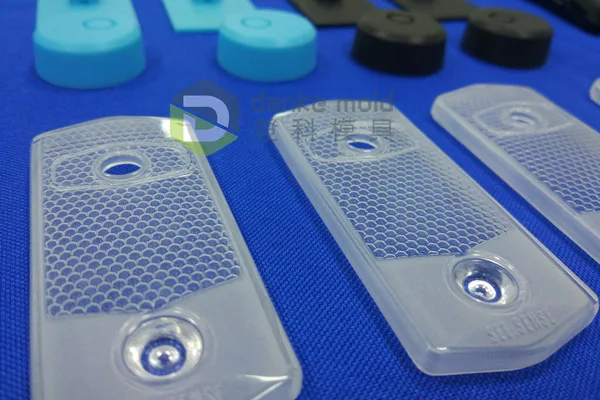The ability to rapidly iterate designs and bring high-quality components to market more quickly is a critical advantage in the fast-paced and competitive automotive industry. Vacuum casting has emerged as the cornerstone technology to achieve this, serving as a vital bridge between digital design and mass production. This process is indispensable for creating functional prototypes and end-use components that meet the sector’s stringent aesthetic and performance requirements without the high cost and long lead times of traditional injection molding.
Understanding the Vacuum Casting Process
Vacuum casting is a multi-step manufacturing process ideal for producing small to medium batches (typically 10-50 units) of high-quality polyurethane parts. The workflow is as follows:
1. Master Pattern Creation: A high-precision 3D model (master pattern) of the automotive component is produced, typically using Stereolithography (SLA) or MultiJet Fusion (MJF) for excellent surface finish and accuracy.
2. Silicone Molding: The master is suspended in a casting frame and liquid silicone rubber is poured around it within a vacuum chamber. The vacuum removes all air bubbles, ensuring a flawless mold cavity.
3. Casting: The cured silicone mold is cut open to remove the master. Under vacuum again, a two-part polyurethane resin is poured into the mold. The vacuum ensures that the resin perfectly reproduces fine details and is void-free.
4.Curing & Demolding: The filled mold is placed in an oven to cure. Once set, the silicone mold is carefully cut open to remove the final pieces, which are then trimmed and finished.
This process allows for the simulation of a wide range of engineering-grade thermoplastics like ABS, PP, PC, and even transparent or rubber-like materials.
Applications in Automotive Prototyping
This is the primary domain where vacuum casting proves its worth, accelerating the entire product development cycle.
Interior Components:
Dashboard (IP) Clusters & Center Consoles: Creates full-scale, realistic prototypes for ergonomic studies, user interface testing, and fit-and-function checks within the vehicle cabin.
Door Panels & Trim: Produces parts with integrated textures and contrasting materials for design validation and customer focus groups.
Air vents, Control Knobs, and Switchgear: Ideal for producing small, detailed components that require high-quality feel and snap-fit assembly testing.
Exterior Components:
Lighting Systems: Used to manufacture both clear lenses (for optical clarity testing) and complex housings (for heat resistance and fitment) for headlights and taillights.
Grille, Emblems, and Badges: Perfect for creating visually accurate, pre-production pieces for marketing and styling approval.
Small Body Trims and Aero Components: Prototypes of the mirror housing, spoiler and diffuser can be made for wind tunnel testing and aesthetic evaluation.
Under-the-Hood & Functional Parts:
Engine Covers and Air Intake Ducts: Prototypes were used for packaging studies and to verify clearance with other engine bay components.
Fluid Reservoirs and Brackets: Cast in durable, temperature resistant resin for functional testing in real-world conditions.

Low volume parts
Applications in Low-Volume Production
When full-scale injection molding is not economically viable, vacuum casting provides a robust solution for end-use part manufacturing.
Pre-Production and Bridge Tooling:
Validation Building: Supplying parts for the first pilot assembly line while permanent, high-cost steel molds are still being manufactured. This kept the vehicle development program on schedule.
Service and Spare Parts: Manufacturing obsolete or low-demand replacement parts for legacy vehicle mod
Specialized and Niche Vehicle Production:
Concept and Show Cars: Creating the unique, high-gloss interior and exterior parts needed for auto show vehicles, where only one or two copies are required.
Hypercars and Limited-Edition Models: For manufacturers producing only hundreds of vehicles per year, vacuum casting is a cost-effective production method for non-structural components.
Advantages and Limitations in the Automotive Context
Advantages:
- Speed & Cost: Significantly faster and cheaper for low volumes than investing in hard tooling.
- Material Versatility: Simulates a wide range of production plastics and elastomers.
- High-Fidelity Finish: Delivers a Class-A surface straight from the mold, suitable for visual master models and end-use parts.
- Design Flexibility: Easily incorporates inserts and allows for rapid design iterations.
Limitations:
- Limited Mold Life: Silicone molds degrade after ∼15-50 cycles, capping production volumes.
- Material Performance: While excellent, cast polyurethanes may not match the long-term durability and chemical resistance of injection molded thermoplastics.
- Part Size: Constrained by the size of the vacuum casting machine.
Conclusion
Vacuum casting is much more than a prototyping technique; It is a strategic manufacturing solution that de-risks the automotive development process. By enabling the rapid creation of functional, high-quality components, it empowers automakers to validate designs thoroughly, accelerate time-to-market, and efficiently produce low-volume specialized vehicles. As the industry continues to evolve with a focus on electrification and customization, the role of vacuum casting in bringing innovative automotive components to life remains more critical than ever.
